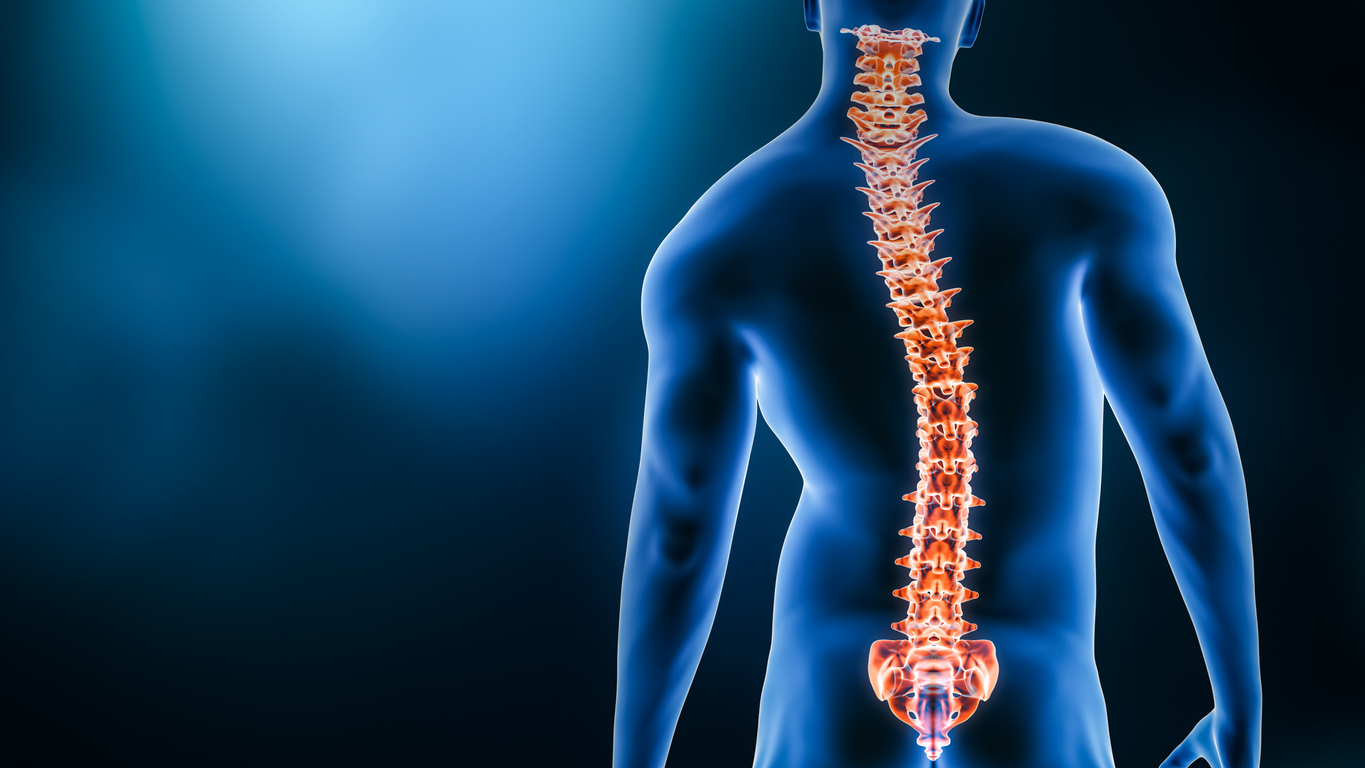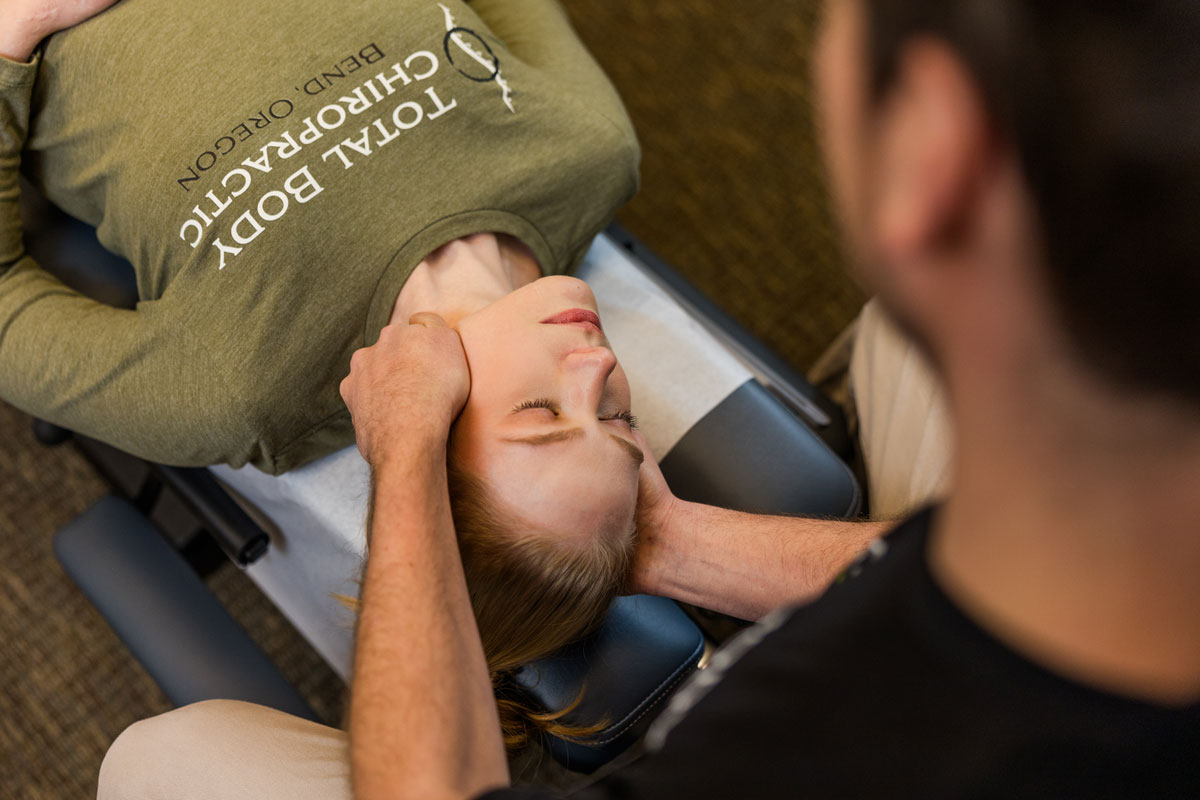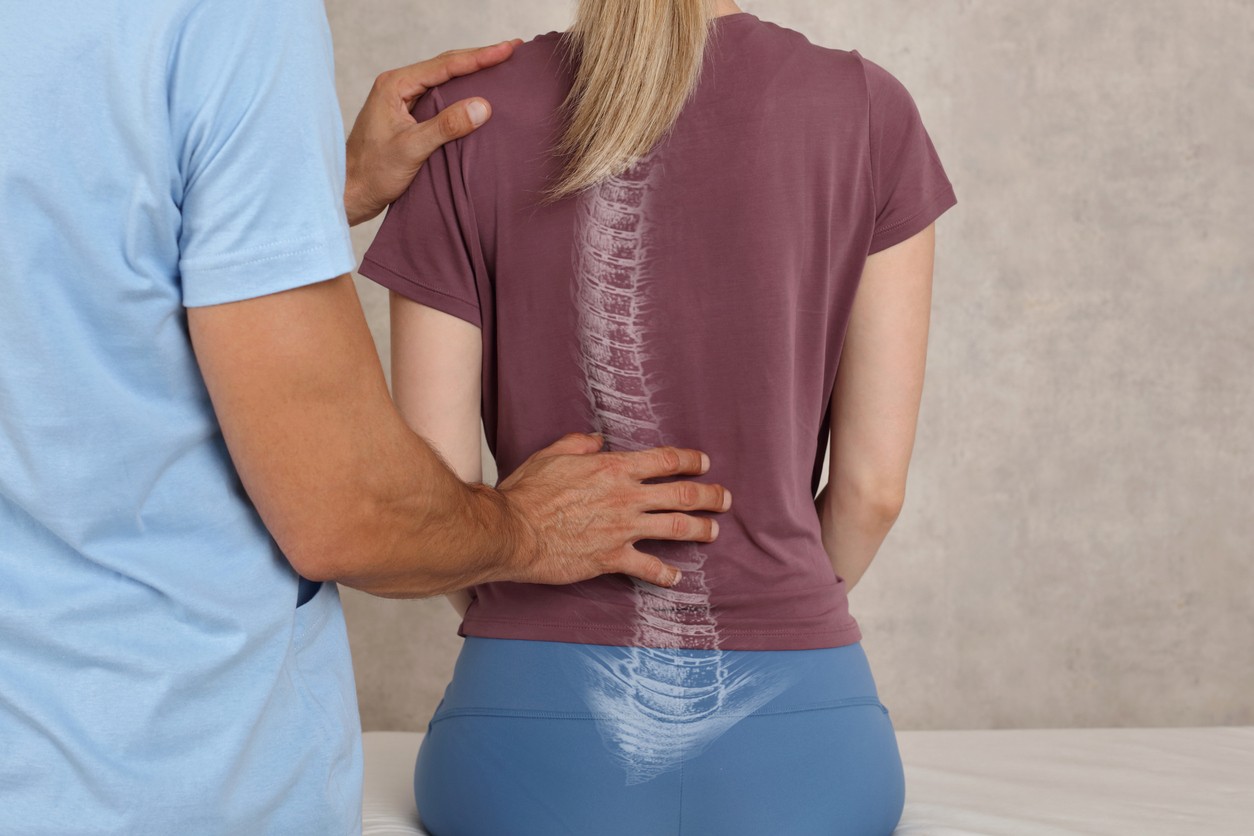Chiropractic Care for Scoliosis: Understanding the Condition and Treatment Options
Scoliosis is a complex spinal condition that affects millions of people worldwide. While traditional medical approaches often focus on observation or surgical intervention, many individuals are turning to non-invasive treatments like chiropractic care to manage their condition and improve their quality of life. In this comprehensive guide, we’ll explore what scoliosis is, its symptoms and causes, and how our Bend chiropractors can offer benefits to those living with this challenging spinal disorder.
What is Scoliosis?

Scoliosis is a three-dimensional deformity of the spine characterized by an abnormal curve. In a healthy spine, when viewed from the front or back, the vertebrae should form a straight line from the neck to the tailbone. However, in individuals with scoliosis, the spine curves to the side, often resembling an “S” or “C” shape.
The severity of spinal curvature is typically measured using the Cobb angle method. This technique involves measuring the angle of the curve on an X-ray image. Curves are generally classified as follows:
- Mild: Cobb angle less than 25 degrees
- Moderate: Cobb angle between 25 and 40 degrees
- Severe: Cobb angle greater than 40 degrees
It’s important to note that scoliosis is not just a simple sideways curve of the spine. The condition also involves rotation of the vertebrae, which can lead to rib cage deformity and changes in the overall posture of the body.
Scoliosis can develop at any age, but it most commonly appears during the growth spurt just before puberty. The condition affects both males and females, though females are more likely to develop severe curves that require treatment.
10 Symptoms of Scoliosis
The symptoms of scoliosis can vary widely depending on the severity of the curve and the age of onset. In many cases, especially in mild scoliosis, there may be no noticeable symptoms at all. However, as the condition progresses, individuals may experience:
1. Uneven shoulders: One shoulder blade may appear more prominent than the other.
2. Asymmetrical waistline: The waist may appear uneven, with one hip higher than the other.
3. Rib prominence: Due to the rotation of the spine, one side of the rib cage may protrude more than the other when bending forward.
4. Tilted head: The head may not appear centered directly above the pelvis.
5. Clothes fit unevenly: Hemlines or pant legs may appear uneven when worn.
6. Back pain: While not always present, especially in adolescents, back pain can be a symptom in adults with scoliosis.
7. Breathing difficulties: In severe cases, the altered shape of the chest can affect lung function and make breathing more difficult.
8. Fatigue: The extra effort required to maintain balance with an curved spine can lead to muscle fatigue.
9. Digestive issues: In some cases, the altered position of internal organs can lead to digestive problems.
10. Reduced range of motion: The abnormal curvature can limit flexibility and movement in certain directions.
It’s crucial to note that the presence of these symptoms doesn’t necessarily indicate scoliosis, as they can be associated with other conditions as well. A proper diagnosis by a healthcare professional is essential.
Causes of Scoliosis
The causes of scoliosis can be diverse and are not always fully understood. In many cases, the exact cause remains unknown, leading to a diagnosis of idiopathic scoliosis. However, researchers have identified several potential causes and risk factors:
- Idiopathic Scoliosis: This is the most common form, accounting for about 80% of all cases. The term “idiopathic” means that the cause is unknown. It’s typically classified based on the following ages of onset. Infantile idiopathic scoliosis, diagnosed from birth to 3 years. Juvenile idiopathic scoliosis, diagnosed from 3-10 years. And finally, adolescent idiopathic scoliosis is diagnosed at 10-18 years.
- Congenital Scoliosis: This type is present at birth and is caused by abnormal formation of the bones of the spine during fetal development.
- Neuromuscular Scoliosis: This form is associated with neurological or muscular conditions such as cerebral palsy, spina bifida, or muscular dystrophy.
- Degenerative Scoliosis: This type typically occurs in older adults and is caused by wear and tear on the spine, often in conjunction with conditions like osteoporosis or degenerative disc disease.
- Genetic Factors: While not a direct cause, there appears to be a genetic component to scoliosis. It tends to run in families, suggesting that genetic factors may increase susceptibility.
- Leg Length Discrepancy: A significant difference in leg length can sometimes lead to the development of a compensatory curve in the spine.
- Poor Posture: While poor posture alone doesn’t cause structural scoliosis, it can exacerbate existing curves and contribute to the development of functional scoliosis.
- Trauma: In rare cases, physical trauma to the spine can lead to the development of scoliosis.
Understanding the underlying cause of scoliosis is crucial for determining the most effective treatment approach. While traditional medical treatments often focus on bracing or surgery for severe cases, many individuals are exploring complementary approaches like chiropractic care to manage their condition and improve their quality of life.
10 Benefits of Chiropractic Care for Scoliosis

Chiropractic care offers a non-invasive, conservative approach to managing scoliosis. While it’s important to note that chiropractic treatment cannot “cure” or completely reverse structural scoliosis, it can provide several benefits for individuals living with this condition:
1. Pain Relief: Chiropractic adjustments can help alleviate pain associated with scoliosis by reducing pressure on nerves and improving overall spinal function.
2. Improved Mobility: Gentle manipulations and exercises prescribed by chiropractors can help improve flexibility and range of motion in the spine and surrounding muscles.
3. Better Posture: Chiropractic care focuses on improving overall posture through proper alignment, which can help reduce the visible effects of scoliosis and prevent further progression of the curve.
4. Reduced Muscle Tension: Scoliosis often leads to muscle imbalances. Chiropractic techniques can help relax tense muscles and strengthen weaker ones, promoting better overall muscle balance.
5. Improved Nervous System Function: By aligning the spine, chiropractic care may help improve nervous system function, potentially leading to better overall health and well-being.
6. Slowed Progression: While more research is needed, some studies suggest that consistent chiropractic care may help slow the progression of scoliotic curves, especially in adolescents.
7. Enhanced Breathing: For individuals with severe scoliosis affecting lung function, chiropractic care may help improve rib cage mobility and breathing capacity.
8. Complementary Care: Chiropractic treatment can work alongside traditional medical approaches, potentially enhancing the effectiveness of bracing or reducing the need for pain medications.
9. Holistic Approach: Chiropractors often take a whole-body approach, addressing not just the spine but also nutrition, exercise, and overall wellness, which can benefit individuals with scoliosis.
10. Improved Quality of Life: By addressing pain, improving function, and enhancing overall well-being, chiropractic care can significantly improve the quality of life for individuals living with scoliosis.
It’s important to note that the effectiveness of chiropractic care for scoliosis can vary depending on factors such as the individual’s age, the severity of the curve, and the underlying cause of the scoliosis. A thorough evaluation by a qualified chiropractor experienced in treating scoliosis is essential to determine the most appropriate treatment plan.
Chiropractic Treatments for Scoliosis

Chiropractors use a variety of techniques and approaches when treating individuals with scoliosis. The specific treatment plan will depend on the patient’s age, the severity and location of the spinal curve, and any associated symptoms. Here are some common chiropractic treatments used for scoliosis:
Our Bend chiropractors employ a variety of specialized techniques when treating individuals with scoliosis. These methods are designed to address spinal misalignment, reduce pain, and improve overall function. Here are some key chiropractic treatments used for scoliosis:
- Spinal Adjustments: This cornerstone of chiropractic care involves applying controlled force to specific vertebrae of the spinal cord. For scoliosis patients, these adjustments are typically gentler and more precise, aiming to improve spinal alignment and reduce nerve pressure.
- Scoliosis-Specific Adjustments: Some chiropractors use techniques specifically designed for scoliosis, such as the Chiropractic BioPhysics (CBP) technique or the CLEAR Institute’s approach. These methods involve precise adjustments based on detailed x-ray analysis.
- Spinal Traction: Various traction methods may be used to gently stretch the spine, potentially helping to reduce the curvature over time.
- Soft Tissue Therapy: Techniques like the Graston Technique or Active Release Technique (ART) are used to address muscle imbalances and tension associated with scoliosis.
- Flexion-Distraction: This gentle, non-thrusting type of spinal manipulation can help increase spinal motion and reduce pain, particularly beneficial for adult scoliosis patients.
- Drop Table Technique: Using a specially designed table with sections that drop a short distance during the adjustment, this technique allows for a gentler adjustment process.
- Shockwave Therapy: While not exclusive to chiropractic care, some chiropractors use non-invasive shockwave therapy to reduce pain and promote healing in the muscles surrounding the spine.
- Instrument-Assisted Adjustments: Tools like the Activator or ArthroStim provide very precise, low-force adjustments, which can be particularly useful for patients who prefer a gentler approach.
- Cox Flexion-Distraction: This technique uses a special table to stretch and decompress the spine, potentially helping to reduce the scoliotic curve.
- Myofascial Release: This hands-on technique works on releasing tension in the fascia, the connective tissue that surrounds muscles, which can be particularly tense in scoliosis patients.
It’s important to note that the specific combination of techniques used will depend on the individual patient’s needs, the severity of their scoliosis, and the chiropractor‘s expertise. Treatment plans are typically long-term and may be used in conjunction with other therapies for optimal results.
The effectiveness of these treatments can vary from person to person. While some individuals report significant improvements in pain levels, posture, and quality of life, others may experience more modest benefits. As with any medical treatment, it’s crucial to have realistic expectations and to work closely with your healthcare providers to monitor progress and adjust the treatment plan as needed.
Get Chiropractic Care in Bend for Scoliosis
Scoliosis is a complex spinal condition that can significantly impact an individual’s life. While traditional medical approaches remain important, especially for severe cases, regular chiropractic care offers a complementary option that may help manage symptoms, improve function, and enhance overall quality of life for those living with scoliosis.
The holistic approach of chiropractic care, which addresses not just the spine but the entire musculoskeletal and nervous systems, can provide benefits beyond simple pain relief. From improving posture and mobility to potentially slowing curve progression in some cases, chiropractic treatments offer hope to many scoliosis patients.
However, it’s crucial to remember that every case of scoliosis is unique. What works for one individual may not be as effective for another. Therefore, a personalized treatment plan, developed in consultation with experienced healthcare providers, is essential.
While scoliosis may be a lifelong condition, with proper care and management, many individuals with scoliosis can lead active, fulfilling lives. Chiropractic care in Bend represents one tool in the broader toolkit of scoliosis management, offering a non-invasive, drug-free option for those seeking to improve their spinal health and overall well-being. Contact us for an appointment to discuss how we can help you manage scoliosis.

